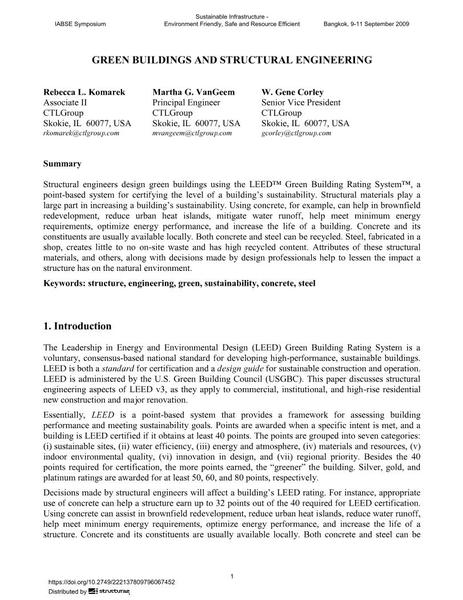Green Buildings and Structural Engineering

|
|
|||||||||||
Détails bibliographiques
| Auteur(s): |
Rebecca L. Komarek
Martha G. VanGeem W. Gene Corley |
||||
|---|---|---|---|---|---|
| Médium: | papier de conférence | ||||
| Langue(s): | anglais | ||||
| Conférence: | IABSE Symposium: Sustainable Infrastructure - Environment Friendly, Safe and Resource Efficient, Bangkok, Thailand, 9-11 September 2009 | ||||
| Publié dans: | IABSE Symposium Bangkok 2009 | ||||
|
|||||
| Page(s): | 1-18 | ||||
| Nombre total de pages (du PDF): | 14 | ||||
| Année: | 2009 | ||||
| DOI: | 10.2749/222137809796067452 | ||||
| Abstrait: |
Structural engineers design green buildings using the LEED™ Green Building Rating System™, a point-based system for certifying the level of a building’s sustainability. Structural materials play a large part in increasing a building’s sustainability. Using concrete, for example, can help in brownfield redevelopment, reduce urban heat islands, mitigate water runoff, help meet minimum energy requirements, optimize energy performance, and increase the life of a building. Concrete and its constituents are usually available locally. Both concrete and steel can be recycled. Steel, fabricated in a shop, creates little to no on-site waste and has high recycled content. Attributes of these structural materials, and others, along with decisions made by design professionals help to lessen the impact a structure has on the natural environment. |
||||
| Mots-clé: |
acier béton structure
|
||||
